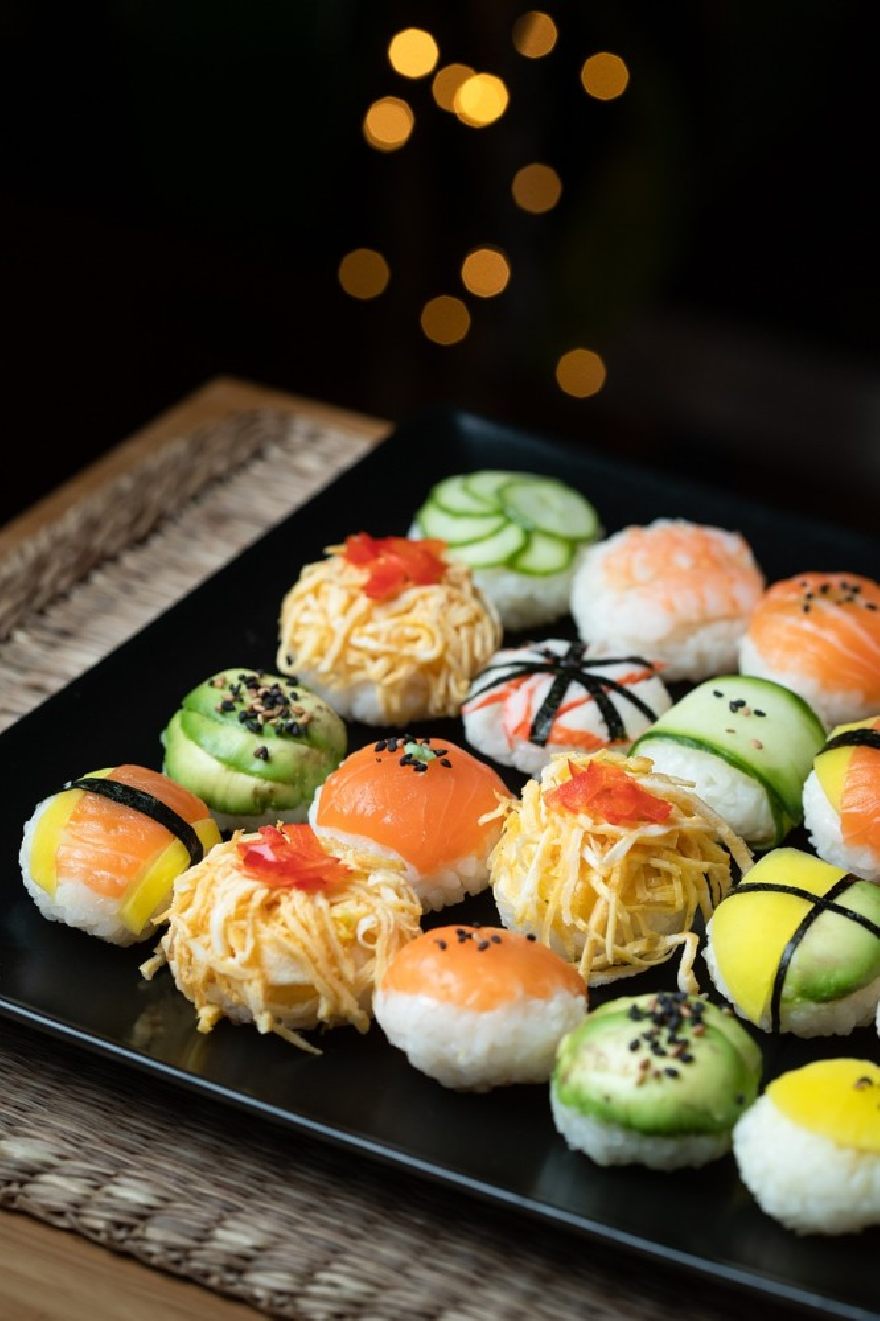Sushi as a traditional dish in Japan
Sushi is one of the most famous and popular dishes in Japanese cuisine. It consists of leavened rice combined with various ingredients such as raw or smoked fish, seafood, vegetables or eggs. Sushi is served in bite-sized pieces, often seasoned with soy sauce, wasabi and pickled ginger. Sushi has a long and diverse history, ranging from the method of preserving freshwater fish in the Mekong Delta to the contemporary art form in Japan.
The origins of sushi
Sushi is not an original Japanese dish, but rather has its origins in a freshwater fish preservation method developed by residents along Southeast Asia's Mekong River. The gutted and cleaned fish was placed in boiled rice in vessels where it was fermented. The rice, which had become sour due to the fermentation process, was thrown away before the fish was consumed. However, the fish pickled in this way could be kept for up to a year.
Starting from the Mekong River, this preservation method also became popular in regions of China and spread from there to Japan. This preservation method has not been used in China to this day. But fish preserved using this method is still eaten in both Thailand and Taiwan.
A Japanese government document mentions sushi in 718. Until the end of the 9th century, in Japan it was predominantly freshwater fish that was preserved in this way. The Japanese specialty known as funazushi developed from this preservation method. Funazushi is a traditional dish consumed in Shiga Prefecture. Female crucian carp caught in Lake Biwa are used for this purpose. The fish fermented in the rice has an intense smell and tastes sharp and sour.
The development of modern sushi
Over time, the preparation of sushi in Japan changed. Instead of fermenting the fish for months, they began to salt it for a short time and mix it with rice. This resulted in faster preparation and a fresher taste. This type of sushi is called narezushi and is still available in some regions of Japan.
In the 17th century, another important step in the development of sushi came: the addition of vinegar to the rice. This not only sped up the fermentation process, but also gave the rice a pleasant aroma and better shelf life. This type of sushi is called Hayazushi and was the basis for many later variations.
In the 18th century, a new form of sushi emerged in Edo (today's Tokyo): Nigirizushi. These are small portions of leavened rice topped with a piece of raw fish or seafood. This form of sushi was invented by a street vendor named Yohei Hanaya who wanted to offer his customers a quick and tasty meal. Nigirizushi soon became very popular and is now considered the most typical form of sushi.
In the 19th century, sushi spread outside of Edo and became a national dish of Japan. With the opening of the first sushi restaurants, new variations of sushi emerged, such as makizushi (rolled sushi), gunkanzushi (boat sushi) and chirashizushi (scattered sushi). Sushi became a symbol of Japanese culture and cuisine.
The spread of sushi in the world
In the 20th century, sushi began to be known outside of Japan. Especially after the Second World War, when many Japanese emigrated to other countries, they brought their culinary traditions with them. Japanese restaurants offering sushi appeared in the United States, Canada, Brazil and other countries. Local ingredients and flavors were often taken into account, such as avocado, mayonnaise or cheese.
In the 1980s, sushi experienced a global boom when it was viewed as a healthy and exotic food. Many celebrities and influencers made sushi a trend and promoted its popularity. Today, sushi is available in many countries around the world and is considered a typical Japanese food.
The diversity of sushi
Sushi is a diverse and creative dish that can be varied depending on the region, season and personal taste. There are countless ways to prepare and enjoy sushi. Here aresome examples of the different types of sushi:
- Nigirizushi: Small portions of leavened rice topped with a piece of raw fish or seafood. The most popular varieties include Maguro (tuna), Ebi (shrimp), Tamago (omelette) or Unagi (eel).
- Makizushi: Soured rice filled with various ingredients and wrapped in a nori -Leaf (dried seaweed) is rolled up. The most popular varieties include Kappa-Maki (cucumber), Tekka-Maki (tuna) or California roll (avocado, crab meat and mayonnaise).
- Gunkanzushi: Leavened rice formed into a small cylinder and wrapped with a nori sheet. A filling of soft or liquid ingredients such as ikura (salmon caviar), tobiko (fly fish roe) or uni (sea urchin) is added to the top.
- Chirashizushi: A bowl of leavened rice served with various Ingredients such as raw fish, seafood, vegetables or eggs. It is a simple and colorful way to eat sushi.
- Oshizushi: Leavened rice topped with an ingredient such as fish or vegetables and pressed in a wooden mold. It is then cut into rectangular pieces and served.
- Inarizushi: Leavened rice stuffed into a pocket of fried tofu (aburaage). It's a sweet and vegetarian way to eat sushi.
How to eat sushi
Sushi is served in bite-sized pieces that can be eaten either with your hands or with chopsticks. There are a few rules you should follow in order to have the best taste experience:
- You should only dip the fish side of the sushi into the soy sauce, but never the rice side. This will prevent the rice from falling apart or becoming too salty.
- You should put some wasabi on the sushi, but not too much. Wasabi is a spicy horseradish that enhances the flavor of the fish and kills bacteria.
- You should eat some pickled ginger between different types of sushi. Ginger is a natural antiseptic that cleanses the mouth and refreshes the taste buds.
- One should drink hot green tea or water with sushi. Alcoholic drinks such as beer or wine can affect the taste of the sushi.
Sushi is a traditional dish in Japan that has a long history and a wide variety.




















